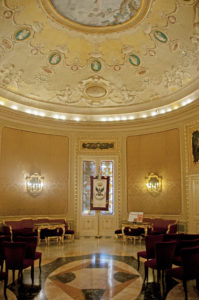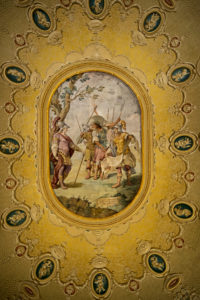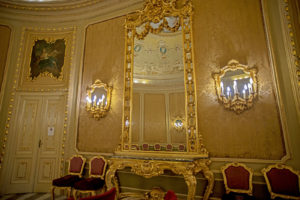Palazzo
Ducezio
is a very compact building, with an elongated rectangular plan with no courtyard. There is a strong difference in height between the two main longitudinal façades.
Vincenzo Sinatra
) probably based the model of the palace on some drawings of the French villa bought in Montpellier by Baron Giacomo Nicolaci.
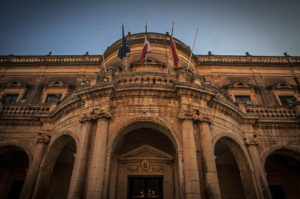
The ground floor is defined by an elegant
portico
with arches framed by a level of columns with
Ionic capitals
which runs along three sides. In the vicinity of the four corners of the building, the portico changes linear style with a concave shape that creates small indentations.
In 1950 the building was crowned with a raised part with a stone balustrade.
The central part of the palace, placed in line with the cathedral, is characterised by an accentuated convexity corresponding to the internal circular hall.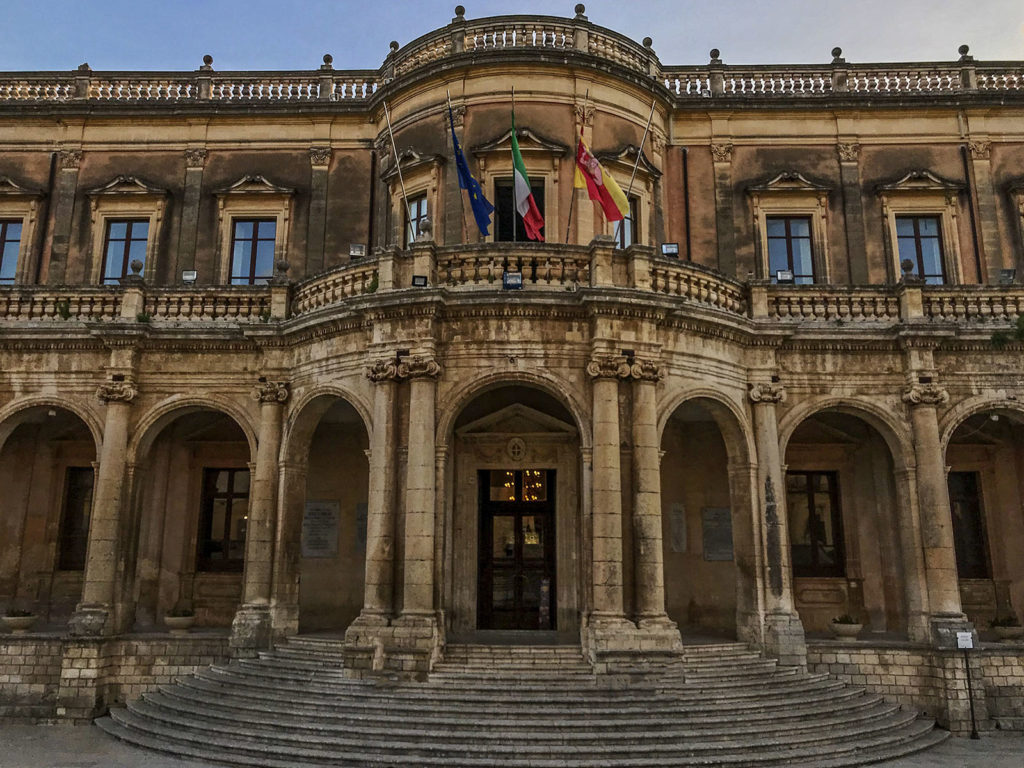 The plan of the building has a series of rooms with different plans. Examples include the circular hall or the famous ovoid-shaped “Sala degli Specchi” (Hall of Mirrors) furnished with Louis XV furniture and large mirrors – which create the illusion of a larger space – sculpted by the Avola-born artist Sebastiano Dugo. On the vault of this room is the fresco “Fondazione di Neas” painted by Antonio Mazza, the neoclassical work depicting the foundation of Noto by the Sicilian condottiero, Ducezio.
The plan of the building has a series of rooms with different plans. Examples include the circular hall or the famous ovoid-shaped “Sala degli Specchi” (Hall of Mirrors) furnished with Louis XV furniture and large mirrors – which create the illusion of a larger space – sculpted by the Avola-born artist Sebastiano Dugo. On the vault of this room is the fresco “Fondazione di Neas” painted by Antonio Mazza, the neoclassical work depicting the foundation of Noto by the Sicilian condottiero, Ducezio.
